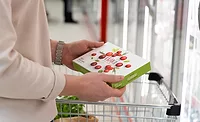Manufacturing News
Tomato waste project shows promise in replacing BPA coatings
A project to determine the suitability of tomato waste as a replacement for BPA can liners has been delayed.
The completion of a two-year project begun in December 2011 investigating the possible use of discarded tomato waste as a BPA substitute for can liners has been delayed until the end of March 2014 “in order to complete the test and confirm the first positive results,” according to Dr. Angela Montanari, coordinator of the BIOCOPAC Project. The project is funded by the Seventh Framework Programme of the European Communities, development and demonstration, 2007-2013.
The BIOCOPAC consortium is a private-public partnership including four leading research centers, four SMEs and three large enterprises from six EU countries. The partnership encompasses the whole agri-food chain—from the tomato processing and waste treatment industries to the lacquers and metal cans manufacturers.
The project’s goal is to develop a sustainable, non-BPA bio-lacquer, which can be applied as an interior and/or exterior coating to cans to safeguard consumer health. This natural lacquer is obtained primarily from industrial tomato processing byproducts, especially the skins. The main component of the lacquer is a biopolymer cutin extracted from the cuticle of the fruit by an optimized, standardized method that can be scaled up from a pilot plant to a full-fledged industrial process.
After the evaluation of the chemical, physical and hygiene/health properties of the new lacquer produced according to EU legislation, its suitability will be tested and confirmed by the production of cans and then packaging with food products. Results are showing the new lacquer is safe for food contact and produces both economic and environmental benefits, making it a viable alternative to BPA and similar materials used for can linings.

|
| In the BIOCOPAC production chain, bio-based thermosetting lacquer is made from renewable resources, tomato skins and waste. Source: BIOCOPAC Project. |
“In case of success, the eco-lacquer could go on the market within two years from the end of the project,” says Montanari. “In March, we’ll prepare a report for the EU Commission. After that, we can make known the results [of the project].” So far, the project has aroused much interest, as the new lacquer from tomato wastes could be a substitute for the lacquers containing BPA, she says.
One patent application has already been filed, and another is in the works. The application, filed by CHIESA (a bio-refinery) and MARTINETE (a tomato processor), presents an innovative extraction method for cutin separation and extraction from tomato processing waste. The method provides the extraction of a bio-resin to be formulated into an eco-friendly varnish for food contact applications, especially in the metal food can packaging sector.
The project was divided into six phases (work packages)—of which the first four were lab based—and the last two, scale up. They were set up as follows:
• WP1: Set up of extraction method of cutin and isolation of almost 400g of cutin from four types of tomato waste
• WP2: Production, analysis and selection of the base resins for 100 percent or modified natural lacquers
• WP3: Development of a completely or partially natural lacquer formulation to apply on metal packaging
• WP4: Outcome of the technological parameters of the applied lacquers on metal sheet in contact with model food solution; legal conformity statements for the selected natural lacquers; compliance with EU Reg. 1935/2004 and 2002/73
• WP5: Production of cans; specification of technological characteristics
• WP6: Performance of new cans; specification of commercial shelf life and lifecycle analysis.
The lab phase (WP1-WP6) will determine the limits and technical problems related to the production and application of the new lacquer to make the appropriate changes and optimize it. During the scale-up phase (WP5-WP6), the technological parameters of the industrial production of the new can will be studied, and with this information, the shelf life of the new packaging system will be obtained. The final result of the project will be a tinplate can prototype suitable for vegetable and fish products.
Besides providing a BPA-safe substitute, the new tomato waste resin provides a green alternative in Europe—the reutilization of processing wastes from the tomato industry, reduction of the costs of disposal for the tomato canning industry and an overall reduction in the environmental impact. European tomato wastes amount to more than 200,000 tons per year. The new resin is also expected to make the metal packaging industry more competitive.
For more information, visit www.biocopac.eu or contact angela.montanari@ssica.it.
Looking for a reprint of this article?
From high-res PDFs to custom plaques, order your copy today!







